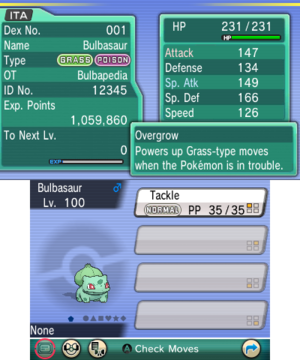Masuda method

|
The subject of this article has no official name. The name currently in use is a fan designator; see below for more information. |
The Masuda method (Japanese: 国際孵化 international hatching), also known as Masuda's method, is a fan-made term for the increased chance of Shiny Pokémon being produced when breeding Pokémon with different languages of origin.
While the standard encounter rate for a Shiny Pokémon (either in the wild or by breeding) is 1/8192 from Generation II to Generation V and 1/4096 in Generation VI onwards, the Masuda method multiplies this rate by 5 (to 5/8192 or about 1/1638) in Generation IV, by 6 (to 6/8192 or about 1/1365) in Generation V, and by 6 (to 6/4096, or 1/683) from Generation VI onwards.
The method is named after (but not by[1]) Game Freak co-founder Junichi Masuda, who described the method in his blog in December 2007. The blog post lists various ways that Game Freak decided to incentivize using the GTS in Pokémon Diamond and Pearl, describing this bonus as "rare colored Pokemon’s Egg can be found little easier".[2] Pokémon Diamond and Pearl's GTS was the first time that players could trade internationally over the internet.
Usage
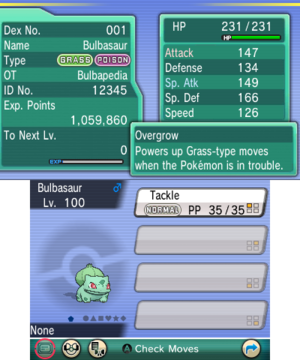
If two Pokémon are bred that both originate from different languages, any Eggs they produce are more likely to be Shiny. From Generation VI onward, the language of origin is marked by an icon on the status screen.
Foreign language Pokémon obtained via in-game trades, such as the Meister's Magikarp, Foppa, and Lt. Surge's Pikachu, Volty, have a different language of origin to the game they were produced in,[3][4] so if bred with a parent caught in the same save file, the Masuda method applies exactly the same as if the in-game trade Pokémon had been caught in a game of a different language.[5]
The save file's language is not relevant to this process—if both Pokémon have the same language of origin, the Masuda method will not apply even if their language of origin differs from the save file.
In Generation IV only, if the Masuda method applies, the Everstone will fail to increase the chance of passing on a Nature. This is due to Nature and Shininess both being determined by the Pokémon's personality value in Generation IV, so manipulating one would interfere with the other. From Generation V onward, this restriction is removed (because Nature is no longer determined by personality value).
However, unlike the Everstone in Generation IV, it is possible to pass down an IV from parent to child with a Power item without canceling out the Masuda method's effects.
Example
Some examples are illustrated below; Pokémon bred in circumstances that invoke the Masuda method and have an increased chance of being Shiny are denoted by their Shiny sprite.
| Parents | Offspring | |
|---|---|---|
| Two Pokémon of the same language | ||
| OT: May | OT: Brendan | OT: (Hatcher) |

|

|
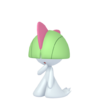
|
| Ralts | ||
| Two Pokémon from two different languages | ||
| OT: Juliana | OT: ショウ | OT: (Hatcher) |
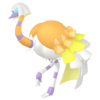
|
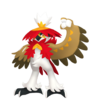
|
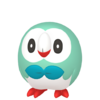
|
| Breeding with an in-game trade | ||
| OT: Dawn | OT: Meister | OT: (Hatcher) |

|

|

|
Mechanics
From Generation III onward, Pokémon track their language of origin, identifying the language of the game they were originally obtained in. From Generation IV onward, if the two Pokémon in the Day Care have different languages of origin, when an Egg is generated, the game will generate extra personality values in an attempt to find one that results in a Shiny Pokémon for the player. This stacks with the Shiny Charm's effect, which works in the same way.
The number of rerolls differs between games. Because the rerolls are in addition to the standard roll, the total number of rolls is one higher than the number of rerolls. The probability of hatching a Shiny Pokémon is approximately equal to the normal Shiny rate multiplied by the total number of rolls (i.e. one more than the number of rerolls). The Shiny Charm also adds rerolls in the same way, so its effect can be combined with the Masuda method.
In Generation VIII and IX, due to a bug, when breeding, if any personality value rerolls are applied, such as the additional shiny rolls provided via the Masuda method or Shiny Charm, the initial roll to generate a personality value is skipped.[6][7] The result is that when breeding using the Masuda method alone, despite the Masuda method being intended to provide 7 total rolls (1 initial roll and 6 rerolls), which is 1 more reroll than prior generations which would provide a 7/4096 (approximately 1/585) chance, it is reduced to 6 rolls total (no initial roll and 6 rerolls), effectively canceling out the additional reroll and providing a 6/4096 (approximately 1/683) chance of hatching a Shiny Pokémon as usual. However, as of Generation VIII, due to the Masuda method providing one more reroll than in previous generations, the chance of hatching a Shiny Pokémon when using both the Shiny Charm and Masuda method is unchanged, providing 8 total rolls (instead of the intended 9), for a Shiny rate of 8/4096 (equal to 1/512) as usual (instead of the intended 9/4096 (equal to 1/455)).
| Generations | Masuda method without Shiny Charm |
Masuda method with Shiny Charm | ||
|---|---|---|---|---|
| Rerolls | Probability (approximate) |
Rerolls | Probability (approximate) | |
| IV | 4 | 5/8192 | N/A | |
| V | 5[8] | 6/8192 | 7 | 8/8192 |
| VI VII |
5 | 6/4096 | 7 | 8/4096 |
| VIII IX |
6 | 6/4096 | 8 | 8/4096 |
Trivia
- The Masuda method is referenced in Pokémon Scarlet and Violet in one of Jacq's biology classes.[9]
See also
References
- ↑ "What is the Masuda Method? Pokemon Sun and Moon's director explains," Eurogamer. YouTube.
- ↑ Hidden Power of Masuda No.118
- ↑ https://twitter.com/Sibuna_Switch/status/1558955387369439232
- ↑ https://twitter.com/Atrius97/status/1558988423460925440
- ↑ https://twitter.com/Sibuna_Switch/status/1558956869829492737
- ↑ https://twitter.com/SciresM/status/1319805906691842050
- ↑ https://twitter.com/SciresM/status/1319799153162006530
- ↑ http://www.smogon.com/forums/showpost.php?p=3322452&postcount=664
- ↑ Jacq: "Eggs from a pair of Pokémon raised around differing languages are a special case. There is a higher than average chance that a Shiny Pokémon will hatch from these Eggs. But we haven’t been able to figure out why that is just yet." (Pokémon Scarlet and Violet)

|
This game mechanic article is part of Project Games, a Bulbapedia project that aims to write comprehensive articles on the Pokémon games. |
